Foreword
Introduction
1 Scope
2 Normative references
3 Terms and definitions
4 Safety requirements and/or protective/risk reduction measures
4.1 General
4.1.1 Overall requirements
4.1.2 Normal climatic conditions
4.1.3 Electrical requirements
4.1.4 Stored energy components
4.1.5 Edges or angles
4.1.6 Guards
4.1.7 Interlocking devices for guards
4.1.8 Two hand control devices
4.1.9 Transmission parts
4.1.10 Electro-sensitive protective equipment
4.1.11 Pressure-sensitive protective devices
4.1.12 Hydraulic systems
4.1.13 Pneumatic systems
4.1.14 Avoidance of automatic restart
4.1.15 Foot protection
4.2 Braking system
4.3 Speed control
4.4 Automatic battery charging
4.5 Load handling
4.6 Steering
4.7 Stability
4.7.1 General
4.7.2 Tilting platform stability test
4.7.3 Stability requirements for trucks not covered by 4.7.2
4.8 Protective devices and complementary measures
4.8.1 Emergency stop
4.8.2 Detection of persons in the path
4.9 Modes of operation
4.9.1 General
4.9.2 Automatic mode
4.9.3 Manual mode
4.9.4 Maintenance mode
4.10 Trucks intended to tow trailers
4.11 Safety-related parts of the control system
4.12 Electromagnetic compatibility (EMC)
4.13 Conveyors fitted to a truck
4.13.1 Trucks fitted with conveyors
4.13.2 Conveyors
5 Verification of safety requirements and/or protective measures
5.1 General
5.2 Tests for detection of persons
5.3 Stability tests
5.3.1 General
5.3.2 Stability tests for truck not covered by 4.7.2
5.4 Fitness for purpose
5.4.1 General
5.4.2 Structural tests
5.4.3 Dynamic tests
6 Information for use
6.1 General
6.2 Warning systems
6.3 Instruction handbook for use
6.3.1 General
6.3.2 Concerning the trucks and system
6.3.3 Operation of the trucks and system
6.3.4 Routine service and maintenance of the trucks and system
6.3.5 Operating information
6.3.6 Information for the application
6.3.7 Details for floor/ground conditions
6.3.8 Details for power sources
6.3.9 Truck modification
6.4 Minimum marking
6.4.1 Marking
6.4.2 Warning signs
6.4.3 Information plates
6.5 Putting into service (commissioning)
Annex A (normative) Requirements for preparation of the operating zones
Annex B (informative) List of significant hazards
Annex C (normative) Determination of rated capacity
Annex D (informative) Load transfer operations
Annex E (normative) Verification of essential health and safety requirements
Annex ZA (informative) Relationship between this European Standard and the essential requirements of Directive 2006/42/EC aimed to be covered
Bibliography
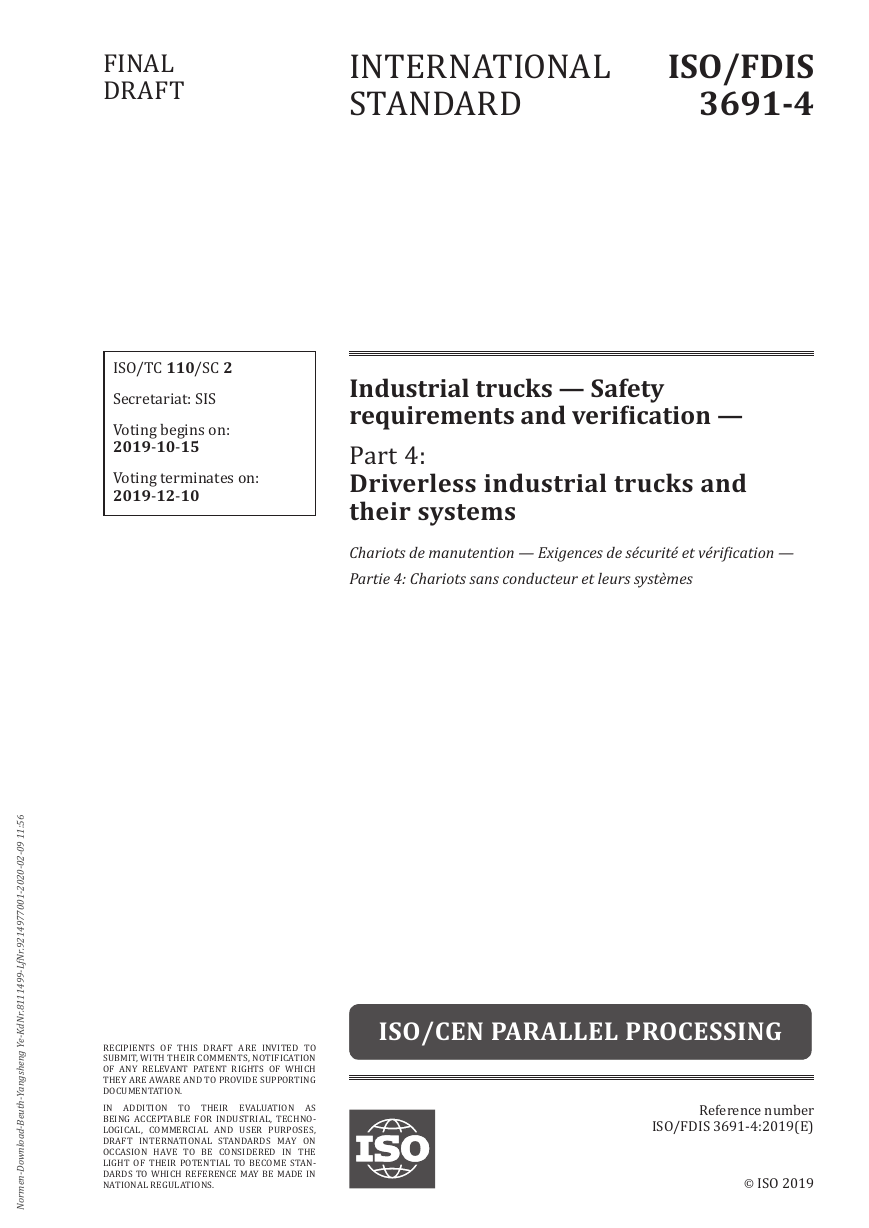
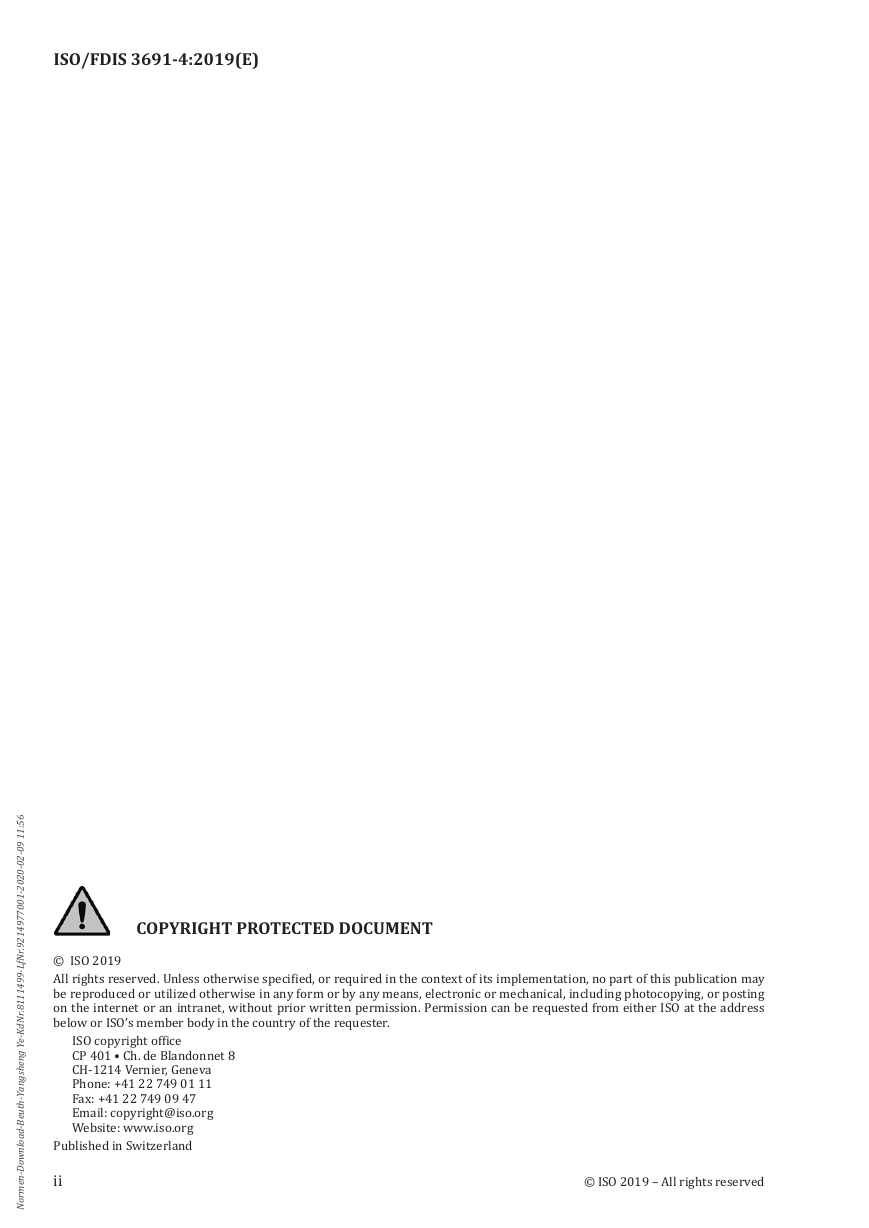
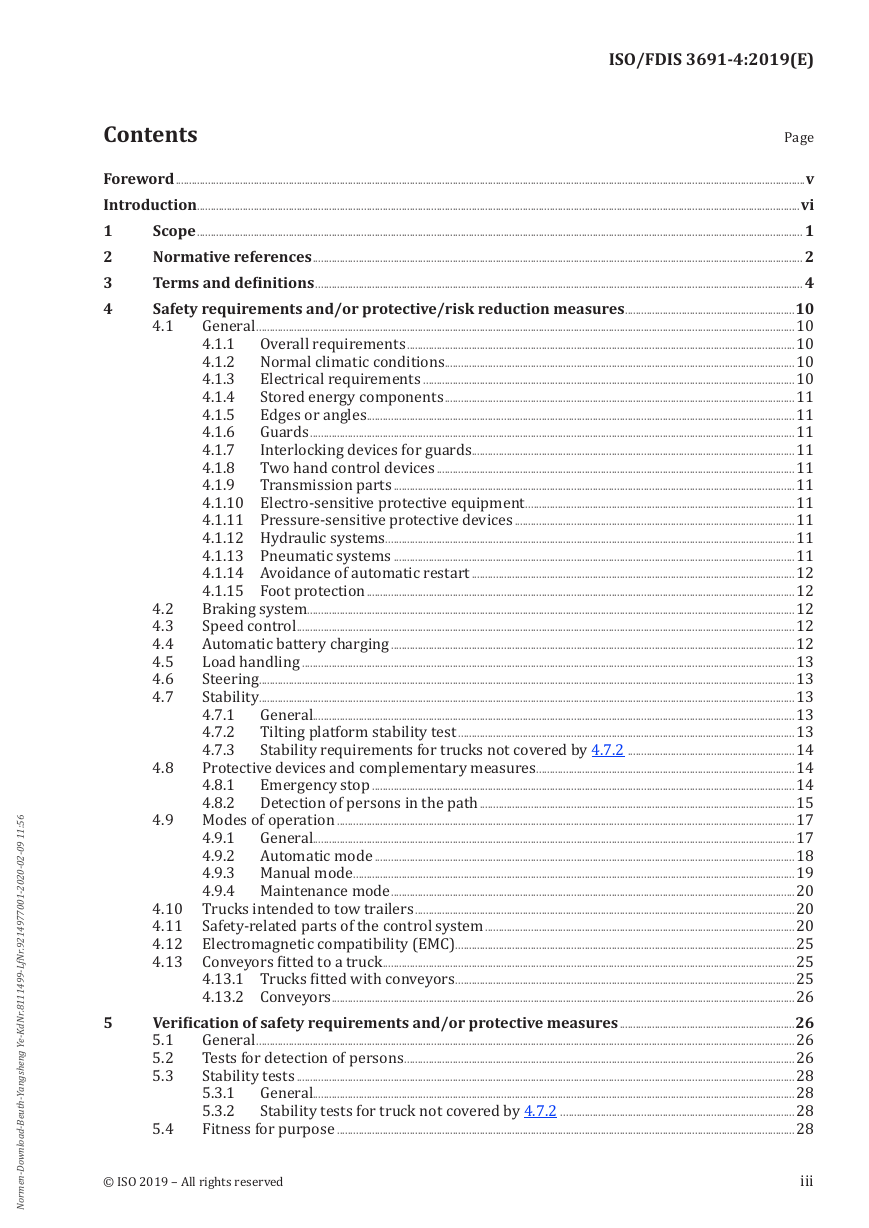
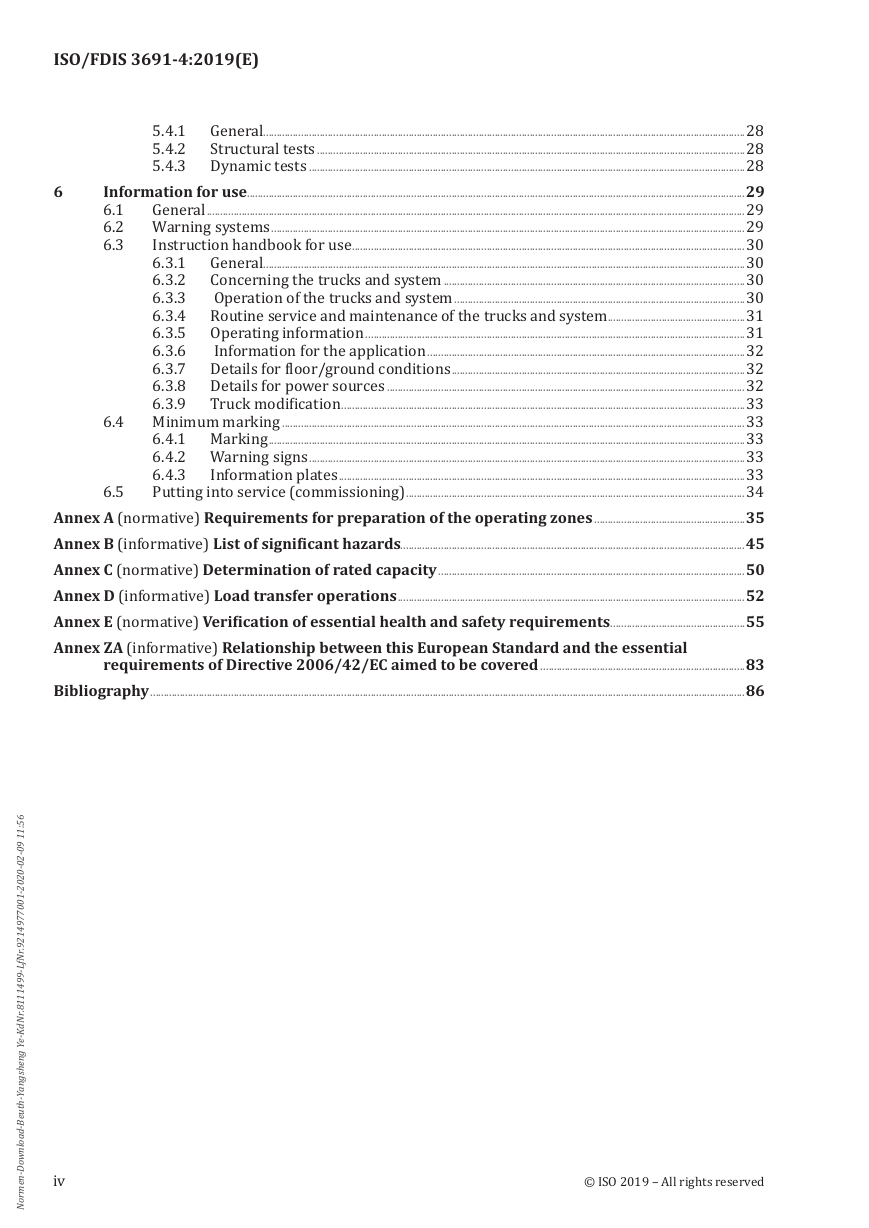
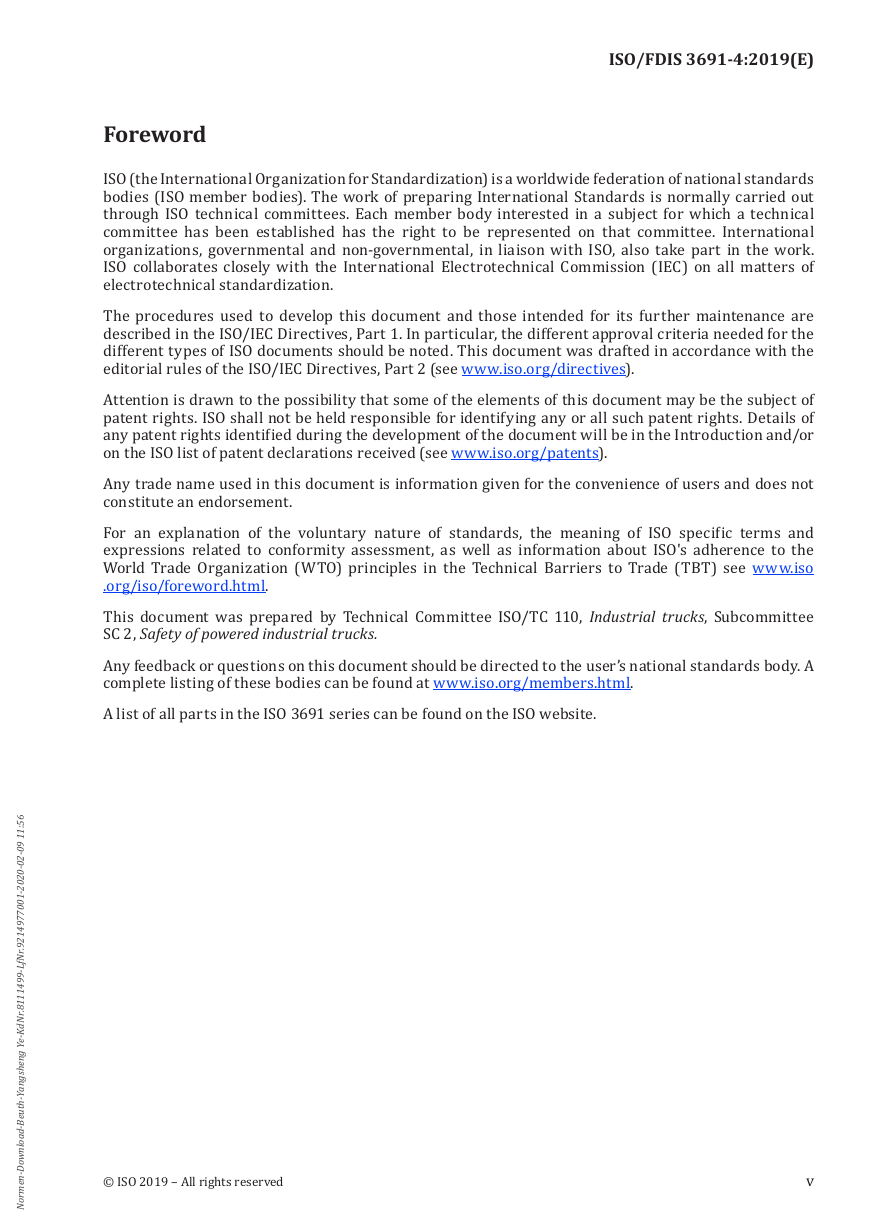
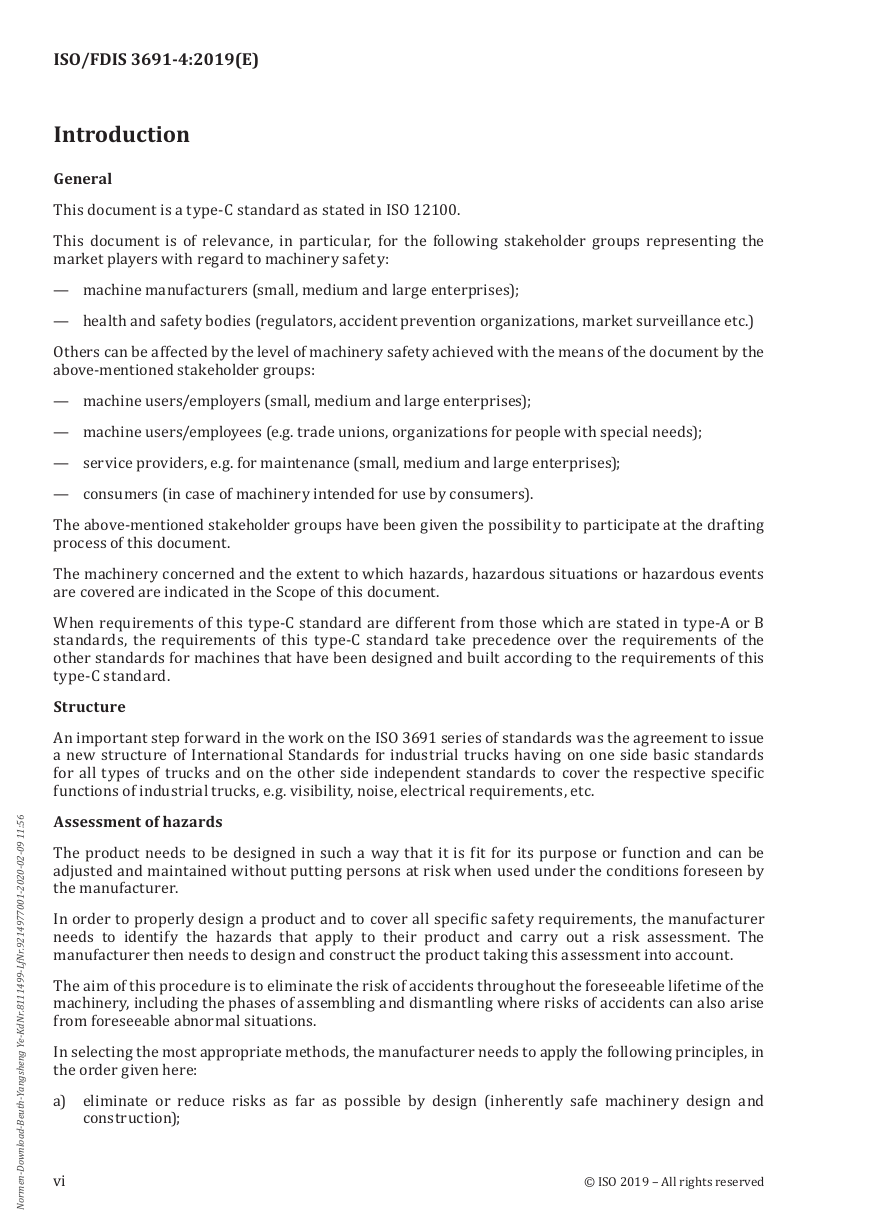
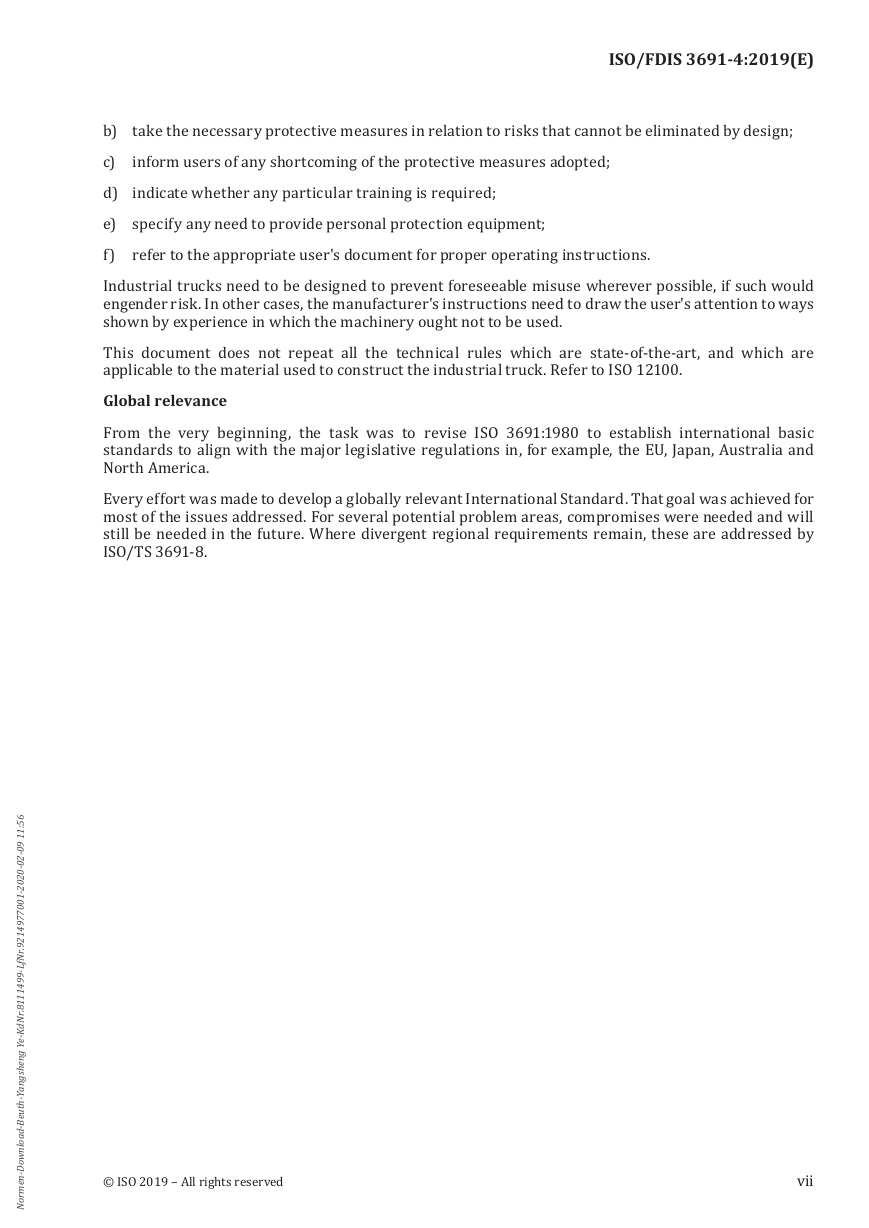









 2023年江西萍乡中考道德与法治真题及答案.doc
2023年江西萍乡中考道德与法治真题及答案.doc 2012年重庆南川中考生物真题及答案.doc
2012年重庆南川中考生物真题及答案.doc 2013年江西师范大学地理学综合及文艺理论基础考研真题.doc
2013年江西师范大学地理学综合及文艺理论基础考研真题.doc 2020年四川甘孜小升初语文真题及答案I卷.doc
2020年四川甘孜小升初语文真题及答案I卷.doc 2020年注册岩土工程师专业基础考试真题及答案.doc
2020年注册岩土工程师专业基础考试真题及答案.doc 2023-2024学年福建省厦门市九年级上学期数学月考试题及答案.doc
2023-2024学年福建省厦门市九年级上学期数学月考试题及答案.doc 2021-2022学年辽宁省沈阳市大东区九年级上学期语文期末试题及答案.doc
2021-2022学年辽宁省沈阳市大东区九年级上学期语文期末试题及答案.doc 2022-2023学年北京东城区初三第一学期物理期末试卷及答案.doc
2022-2023学年北京东城区初三第一学期物理期末试卷及答案.doc 2018上半年江西教师资格初中地理学科知识与教学能力真题及答案.doc
2018上半年江西教师资格初中地理学科知识与教学能力真题及答案.doc 2012年河北国家公务员申论考试真题及答案-省级.doc
2012年河北国家公务员申论考试真题及答案-省级.doc 2020-2021学年江苏省扬州市江都区邵樊片九年级上学期数学第一次质量检测试题及答案.doc
2020-2021学年江苏省扬州市江都区邵樊片九年级上学期数学第一次质量检测试题及答案.doc 2022下半年黑龙江教师资格证中学综合素质真题及答案.doc
2022下半年黑龙江教师资格证中学综合素质真题及答案.doc